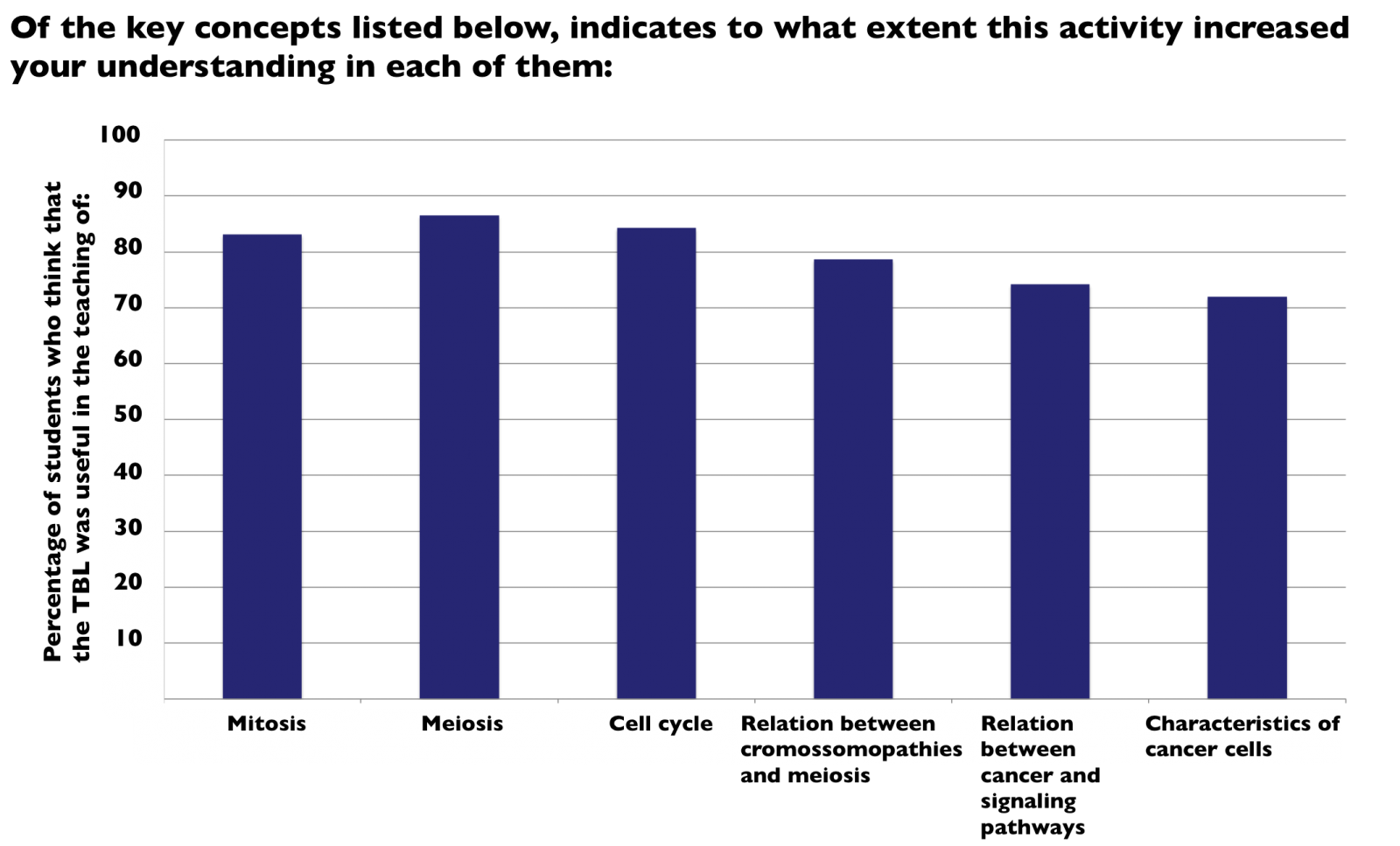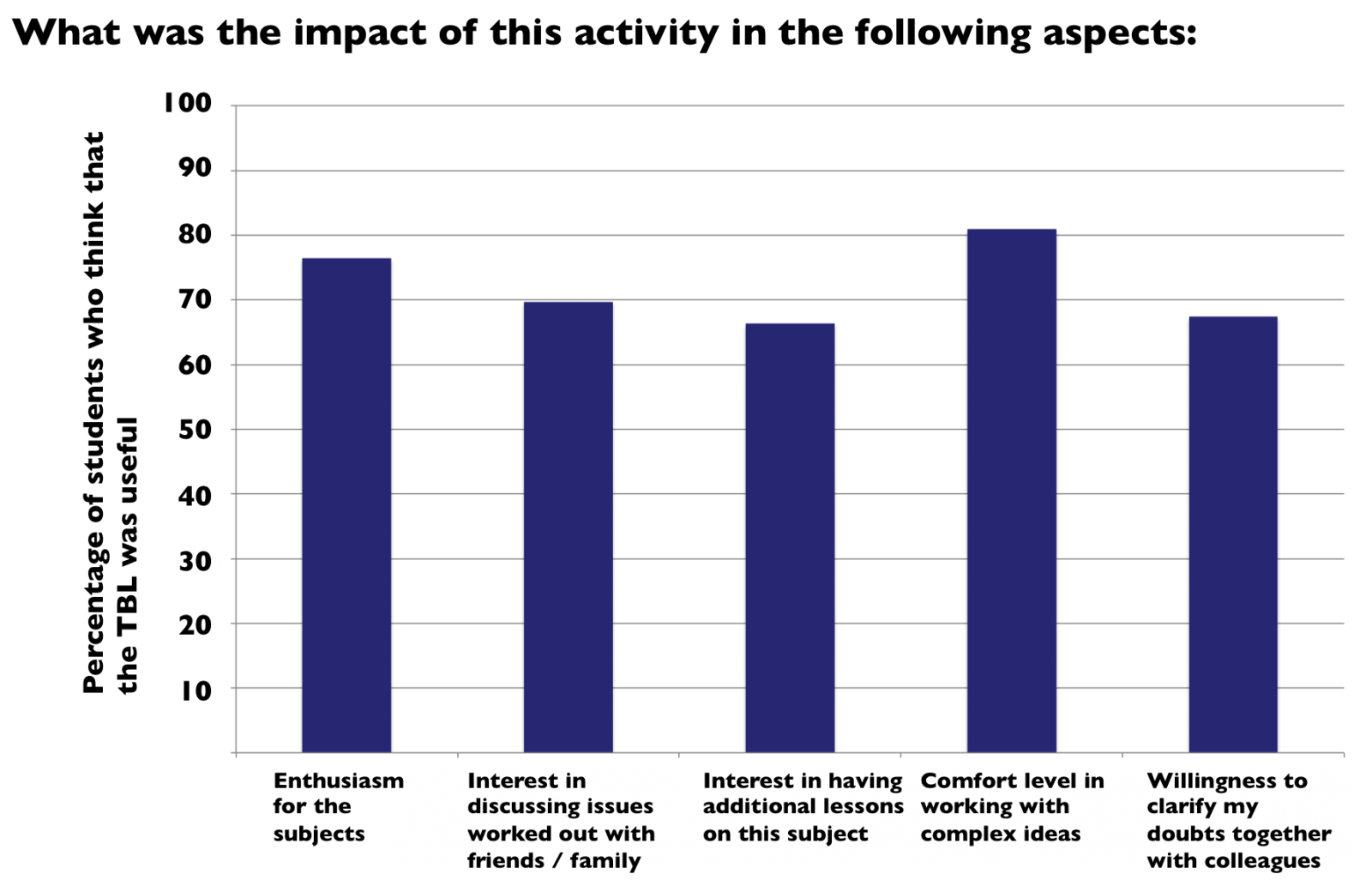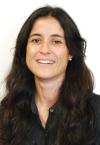
| Theme: 5BB Team Based Learning/Learning anatomy | |||
 |
||||||
| A cell biology Team-Based Learning day achieves high acceptability in a large class of first year medical students |
 |
|||||
|
||||||
This activity was developed in the context of the Molecules and Cells unit. The Molecules and Cells unit are part of the undergraduate medical programme of the School of Health Sciences, University of Minho, Braga, Portugal. This unit takes place in the beginning of the first year of a six-year study plan and the duration of the course is approximately 12 weeks. 3 modules compose the Molecules and Cells unit: anatomy of cell physiology; molecular/genetic biology and cell proliferation, differentiation and cell death (module in which this activity took place). Students at this phase are already willing to deal with some medical issues and for that reason sometimes the interest of the medical students for studying basic science is not high. For that reason, as an attempt to increase their interest for basic themes, we designed a Team Based Learning (TBL) day with the aim of explore/teach basic process such as mitosis and meiosis.
Team Based Learning is not commonly used in cell biology courses. Herein, we developed a TBL day for a large class of first year medical on molecular and cellular processes of mitosis and meiosis associated with human pathologies. We describe the acceptability of the activity by students.
From the 162 students, 130 participated in this TBL activity. The learning objectives were related to cell cycle, mitosis and meiosis mechanisms, and their implications on chromosomopathies and cancer.
The TBL activity:
Step1: An Individual Readiness Assignment (IRA) was solved individually. The IRA was developed by clinical and basic sciences faculty and comprised 27 Items, all of which clinical vignettes and was administered in an auditorium (60 min).
Step2: Students worked around the IRA in their teams (120 min). Each team was composed by 6-8 students and students were in tutorial rooms with access to internet.
Step3: the class returned to the auditorium to discuss the learning issues (180 min).
Evaluation fo the activity: 24 hours later, students answered a custom-made survey to evaluate the TBL activity. This survey was online and was available during 72 hours.

There were 89 responses (68% response rate). Students considered that the TBL day largely increased their knowledge on mitosis (83%), meiosis (86.5%), cell cycle (84.2%), relationships between chromossomopathies and meiosis (78.6%), cancer and cell signaling (74%) and characteristics of cancer cells (72%).

We also assessed the impact of the TBL day in general aspects regarding the interest of the students for the basic themes that were taught in the activity.

A large class of first year medical students developed positive perceptions of a TBL day on cell division and proliferation. We also observed that the objetives were reached by the students and that in the survey analysis of open-ended responses revealed that students enjoyed:
•the opportunity to contextualize problems within relevant clinical situations,
•mediation discussions between colleagues
•opportunity to seek information autonomously.
A TBL day seems to achieve positive motivation outcomes in first year medical students and it seems to increase the interest of the dtudents for basic themes.

 Send Email
Send Email